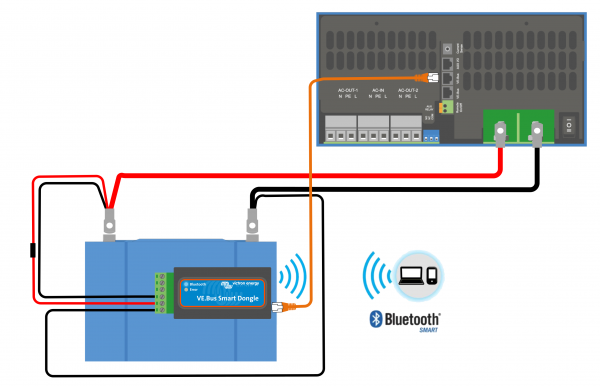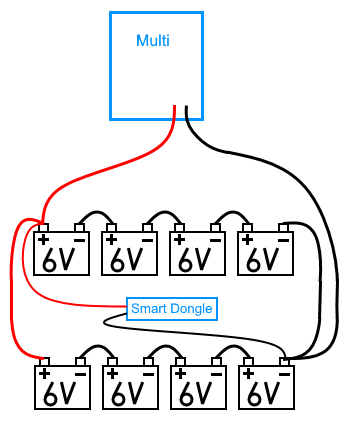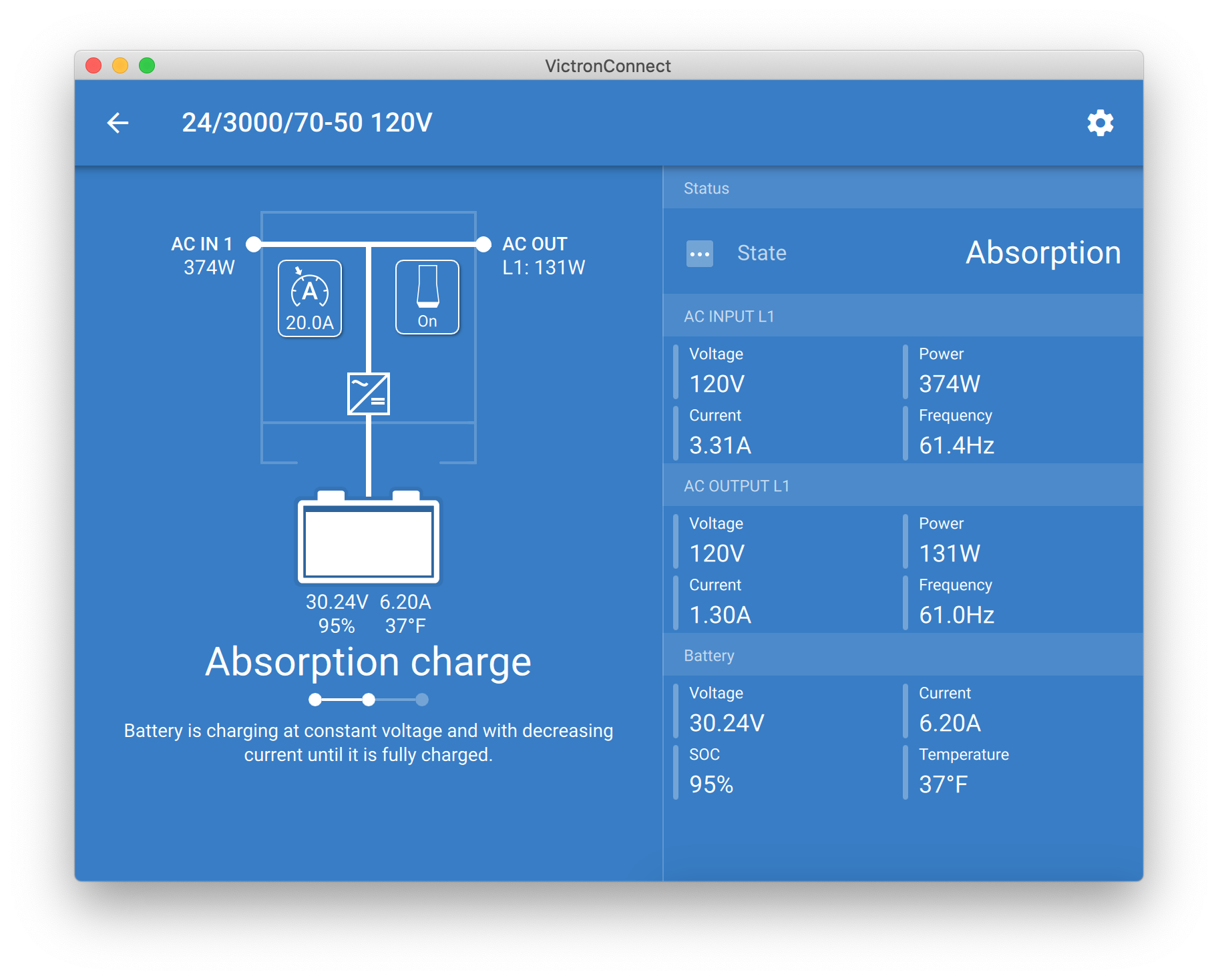I went out of town for several days and after three unplanned cloudy days, the system shut down as expected. What wasn’t expected was the readings when I got home and turned on the generator to charge the batteries. The first image below shows what the status was when I first turned it on. As you can see, the SOC is 41% after about 15 minutes of turning the generator on.
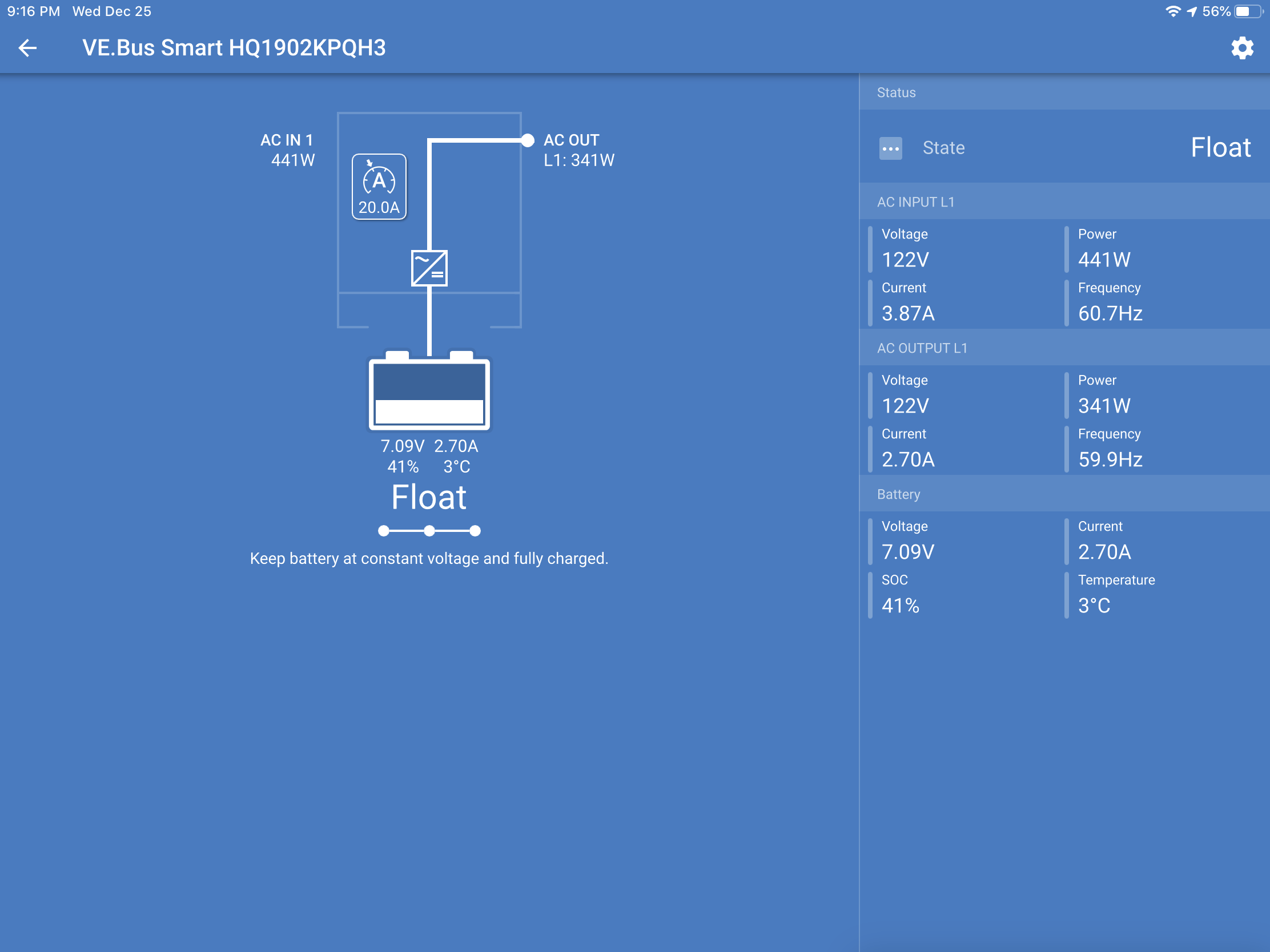
I was wondering why it was floating if the batteries were at 41%. After 90 minutes of no change, I started looking into why the Multiplus was floating instead of bulk charging. I found a couple of messages in the Community that suggested switching it to “Charge only” as a way to reset the Multiplus. So I did and it switched to absorption mode (at 9:11pm).
Immediately after doing that, the next reading I got was 85% SOC. Literally five minutes later, I got the following: 100% charge and back to Float at 9:59pm, for a total elapsed time of 48 minutes.
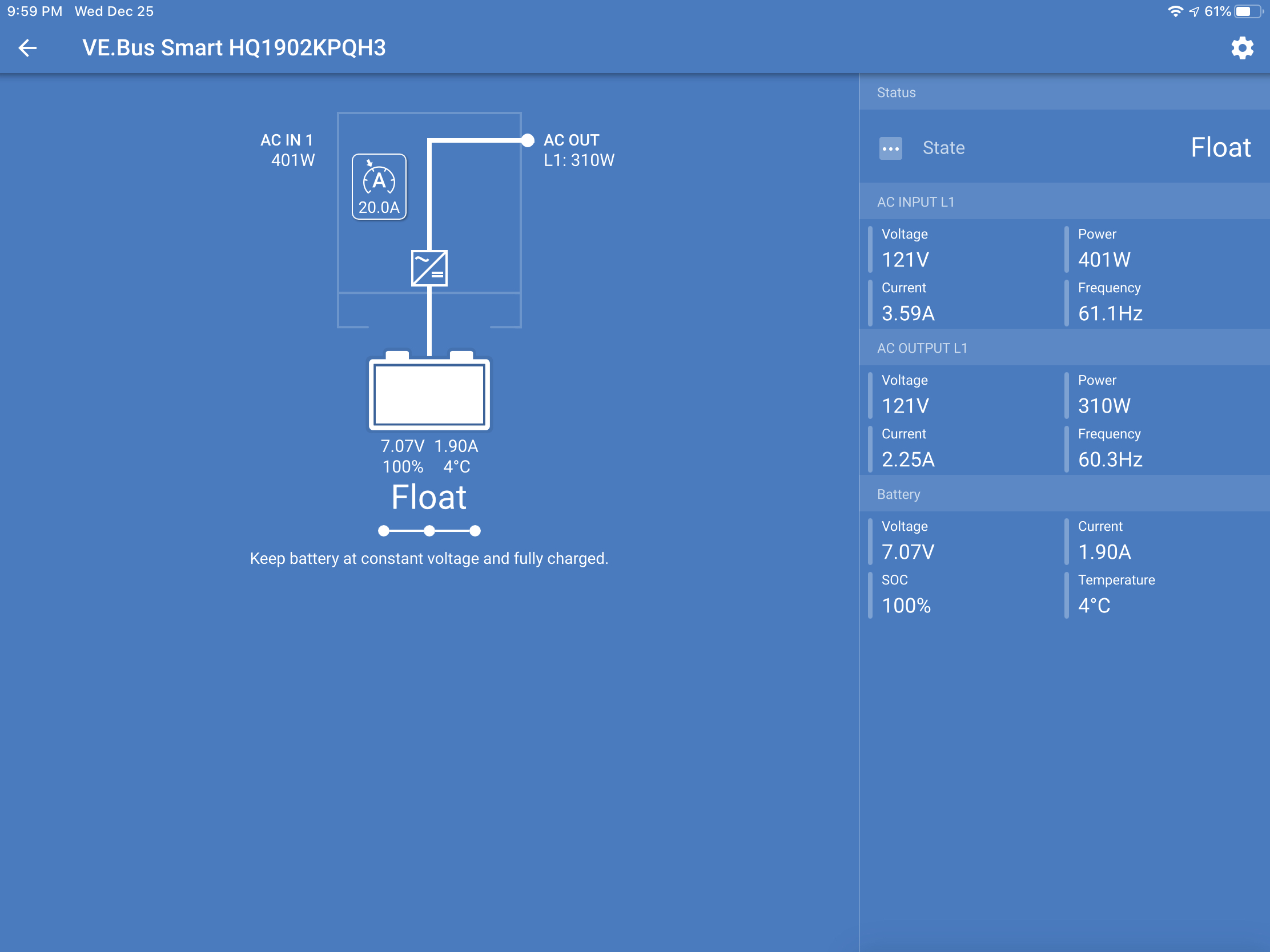
So my questions are:
- Is it to be expected that a system that was shutdown due to SOC settings should go from 41% to 100% in 48 minutes?
- Was it some kind of hiccup in the system that I needed to change it to Charger Only for it to go off Float to Bulk and then Absorption charge?
- If this is abnormal, what do I need to do to get a better understand and control of this behavior?
- Are there settings I need to change?
The battery bank is eight 6v 385ah batteries in series/parallel at 24v.
Thanks
Todd

